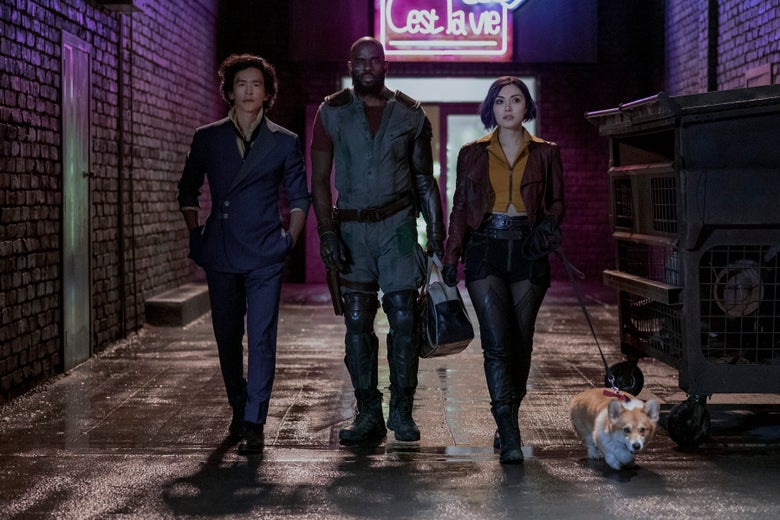Lauded by mainstream critics and anime fans alike for its visual style, Yoko Kanno’s soundtrack, and its explorations of mortality, nihilism, and identity, Cowboy Bebop has enjoyed an excellent reputation since its 1998 premiere.
Netflix’s take on the show has a love-hate relationship with its source material, retaining the premise and almost every single character from the original and re-creating and referencing memorable shots and scenes, but adding original elements like comically trite dialogue, embarrassing dramatic turns, and an original and unengaging plotline that only pull focus from the core story it’s trying to adapt.
Set in the year 2071, the original series tells the story of former crime syndicate member Spike Spiegel and ex–Inter Solar System Police officer Jet Black, both of whom make a living as bounty hunters while traveling across the galaxy on their ship, the Bebop.
Most episodes of Netflix’s take on Cowboy Bebop follow the same formula: Take the plot from an episode from the anime in its entirety, add some original scenes or a subplot to fill the runtime, and fold in the new storyline for now-expanded characters Vicious 2002 film Cowboy Bebop: The Movie.
Vicious is never gone long enough for us to fear what he’s planning, and Julia is never gone long enough for us to miss her as Spike does, diminishing the impact of the two characters with whom Spike is meant to have his most fraught and complex relationships.
These are characters that anime fans continue to name among their all-time favorites, and when the Netflix show allows itself to slow down and play around with the cast more, you can almost see a version of this adaptation that feels acceptable, if not additive.
Another consequence of his age change is that, when we see what exactly Spike was up to during his time at the Syndicate in an exhausting flashback episode, we’re not seeing a teenage boy being unknowingly exploited by a shadowy crime syndicate, but a middle-aged man who should probably know better.
But it’s also contemplative, depicting a bleak vision of the future in which people are struggling with social atomization, economic inequality, and ecological devastation, while still finding beauty and hope in the power of human connection and the fleeting nature of life.
The finale prepares viewers for another season, which promises to diverge even more from the anime’s story, but ends with a moment so cringeworthy that it may discourage viewers from continuing to watch the show at all.
